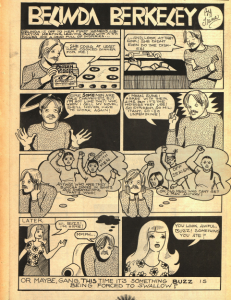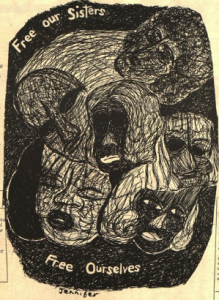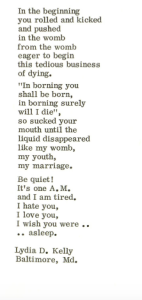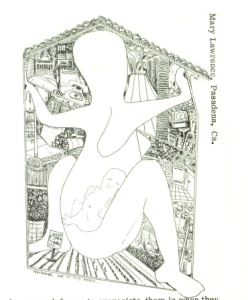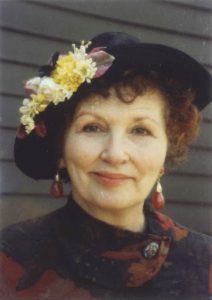Published in Women: A Journal of Liberation, Linda Gordon breaks down the nuclear family dynamics into nine main points. Through the exploration of the nuclear family structure, Gordon brings insight into the reasons women are seeking liberation from the confinement of the family during the Second Wave Feminist Movement.
One issue Gordon critiques is the social framework the family is built on: a working husband and a woman and her children at home. Gordon shares that this framework “keeps women and children isolated” (Gordon, 20). The nuclear family allows for only the husband to be free while isolating the mother and children from society. Women are boxed in their homes and are expected to maintain all household duties. Patriarchal society deems women essential to the home, yet holds no real respect for their hard work. Gordon reveals why many women during the Second Wave Feminist Movement sought liberation from a confining homelife.
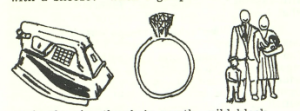
Barb Hayes draws the stages of a woman’s life. The iron symbolizes a working woman, the ring symbolizes marriage, and then there is an outline of a family.
Gordon also sheds light on the repression of women’s sexuality and sexual expression. Gordon states that “women in families are trained to see themselves primarily as mothers and reproducers, not as enjoyers of sex” (Gordon, 20). Gordon exposes how before starting a family, women are only viewed as sexual objects by men. After a woman settles in with a man, she is no longer supposed to engage in any form of sexual expression or activities unless it is for reproduction. The nuclear family structure restricts all forms of sexual expression and defines women as mothers. Gordon’s solution to sexual repression can only be reached through “collective effort,” which the Second Wave Feminist Movement helps to promote (Gordon, 21).
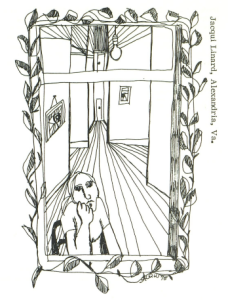
Jacqui Linard illustrates a woman sitting by her windowsill. The woman has a contemplating face while she stares out the window.
Gordon continues to critique how the structure of the family creates a sense of “fulfillment” in gender roles. Gordon uses the role of a mother to prove the point that “a mother is forced to think of herself as ‘mother’ and to approach the whole world as ‘mother’” (Gordon, 22). Women are directly associated with motherhood and are expected to represent themselves as mothers: loving, nurturing, and selfless. Fighting for liberation will provide women with a new definition for themselves–– one that reflects their individuality. Breaking these roles will end conformity and promote individualism among all women in society.
Gordon ends her essay by proposing that the nuclear family must be destroyed. Falling victim to a nuclear family framework will only support the expectations and roles society has placed upon women. Therefore women need to encourage other women to take the initiative of creating a new family unit where inclusion and needs of women are prioritized.
Works Cited:
Gordon, Linda. “Functions Of The Family.” Women: A Journal for Liberation, vol. 1, no.2, pp 20- 24.
Hayes, Barb. “Untitled.” Women: A Journal for Liberation, vol. 7, no.2, pp 59.
Linard, Jacqui. “Untitled.” Women: A Journal for Liberation, vol. 4, no.3, pp 38.
Women: A Journal for Liberation, vol. 1, no.2, Winter 1970.
Women: A Journal for Liberation, vol. 4, no.3, Spring 1973.
Women: A Journal for Liberation, vol. 7, no.2, Winter 1976.

